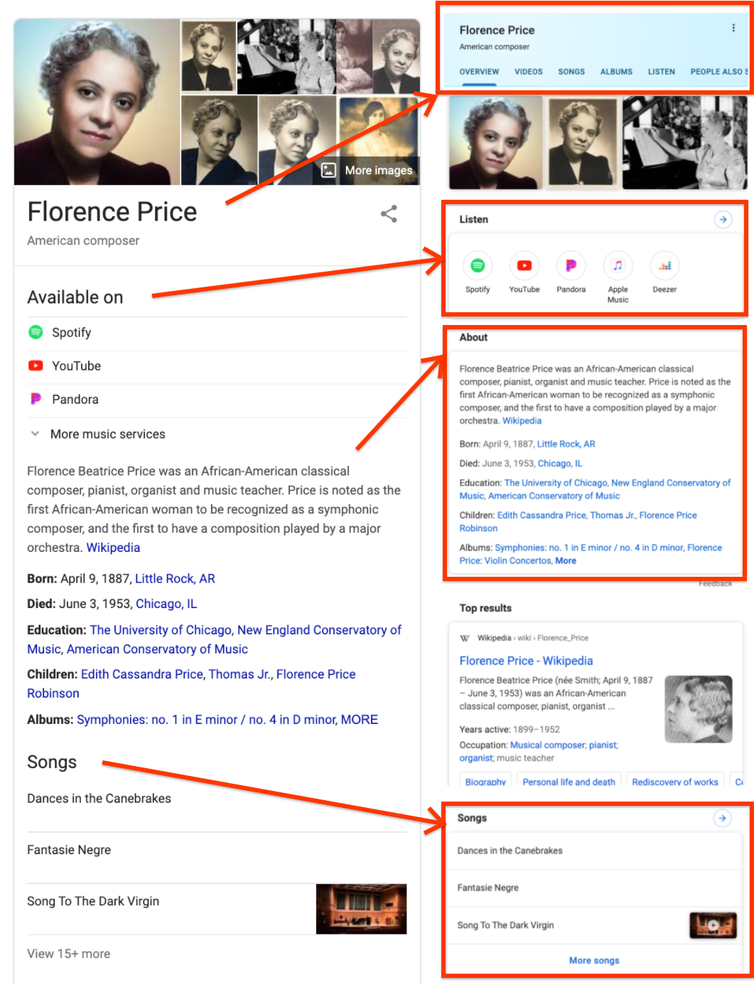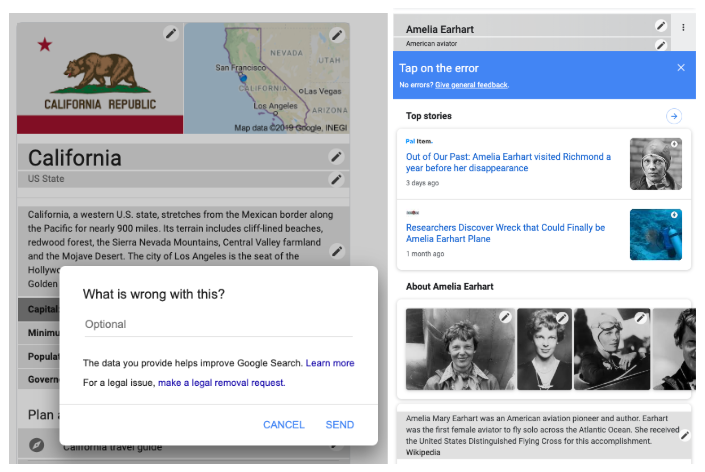Google’s Knowledge Graph is like a “giant virtual encyclopedia of facts” that Google references to generate certain elements of search results.
The virtual encyclopedia, as Google puts it, has grown to be quite large.
But what goes into creating the knowledge panels Google shows in its search results?
In this post, you’ll learn the basics of Google’s Knowledge Graph and how Google generates knowledge panels.
What Is the Google Knowledge Graph
Google’s Knowledge Graph is now comprised of over 500 billion facts about 5 billion entities, according to Google’s Search Liaison, Danny Sullivan.
Google’s Knowledge Graph has amassed over 500 billion facts about five billion entities — people, places and things. This post explains how the Knowledge Graph works, presents information in knowledge panels & how we work to improve it. https://t.co/fSWYTl6i4B pic.twitter.com/ZR4CR8BzTJ
— Google SearchLiaison (@searchliaison) May 20, 2020
Google’s Knowledge Graph is responsible for generating the boxes shown in search results for queries about people, places, and things.
Those boxes, called knowledge panels, present a list of key facts pulled from the Knowledge Graph.
According to Google:
“They’re designed to help you quickly understand more about a particular subject by surfacing key facts and to make it easier to explore a topic in more depth.”
How Google Generates Knowledge Panels
Knowledge panels are automatically generated, which Google points out in case anyone thinks there’s someone updating these things manually.
Google’s automated systems aim to show the most relevant and popular information for an entity in a knowledge panel.
What’s shown in a knowledge panel will vary from one entity to another, but generally Google will include:
- Title and short summary of the topic
- A longer description of the subject
- A picture or pictures of the person, place or thing
- Key facts, such as when a notable figure was born or where something is located
- Links to social profiles and official websites
A knowledge panel may also include more specialized information depending on the type of entity being searched for.
For example, certain types of knowledge panels may include:
- Songs from musical artists
- Upcoming episodes from TV shows
- Rosters of sports teams
Where Does the Information Come From?
Google’s Knowledge Graph, introduced in 2012, gets its information from web content as well as licensed databases.
Wikipedia is one of the most commonly cited sources, but it’s not the only source.
According to Sullivan:
“We draw from hundreds of sources from across the web, including licensing data that appears in knowledge panels for music, sports and TV.
We work with medical providers to create carefully vetted content for knowledge panels for health issues.
We also draw from special coding that content owners can use, such as to indicate upcoming events.”
Multiple Knowledge Panels on Mobile
Since Knowledge Panels were first launched, search behavior has shifted to the point where most activity now occurs on mobile.
Knowledge Panels were originally designed for desktop search, and initially weren’t very compatible with mobile screens.
Mobile screen size doesn’t allow for a side-by-side display in the same way desktop does.
To work around this, Google presents multiple knowledge panels in mobile search which are spread throughout the SERPs.

Changing a Knowledge Panel
Sullivan admits that inaccuracies in the Knowledge Graph can happen, which leads to the wrong information being displayed in search results.
If you spot an inaccuracy you can notify Google by selecting the “Feedback” option.

Google uses this feedback to improve the Knowledge Graph by analyzing it to understand how the inaccuracies weren’t automatically detected.
Further, Google will remove inaccurate facts that are brought to its attention, especially when they relate to public interest topics.
Those who have “claimed” their own knowledge panel, such as a person or company, can communicate changes directly to Google at any time.
How to Get in Google’s Knowledge Graph
There is no exact way to get content in Google’s Knowledge Graph, but there are various optimization methods that can improve a site’s chances of being included in it.
Here are different ways you can optimize content for Google’s Knowledge Graph:
- Use structured data markup
- Create a Google My Business profile
- Get listed on Wikidata.org and Wikipedia
- Build more links
- Create social media profiles
- Create listings in relevant directories
- Promote your content and share it widely
Utilize the above tactics in conjunction with traditional SEO to maximize the chances of getting your content in Google’s Knowledge Graph.
Does Google’s Knowledge Graph Help SEO?
Yes, the Knowledge Graph does help SEO as it improves Google’s understanding of what a page is about and which queries it’s relevant for.
The more context Google has about a page the more efficiently it can rank said page.
Another way Google’s Knowledge Graph helps with SEO is by making content discoverable across more surfaces.
Google is more capable of returning the content for natural languages queries, such as voice searches, as it can recognize individual attributes and entities.
Knowledge Graph content may be displayed more prominently in search results as it’s eligible for Knowledge Panels and rich results.
How to Request Edits to Knowledge Graph
Knowledge Panels are automatically generated but, if Google gets it wrong, site owners can request edits using the “request an edit” button.
Request an edit to Google’s Knowledge Graph by following the steps below:
- Go to Google Search.
- Sign in to the Google account associated with the entity that you represent.
- Search for your entity on Google and find its knowledge panel. Ensure you see your entity’s title at the top of the knowledge panel.
- At the top of the knowledge panel, click Suggest an edit (or Suggest edits on mobile).
- Click the information that you want to change. If you have multiple suggestions, submit feedback for each item separately.
- In the response box that opens, write a short description that includes the following:
- Clearly state your suggested change.
- Explain why you believe your suggestion should replace the existing content.
- If applicable, include any publicly accessible URLs that confirm your suggested changes.
- Click Send.
More Resources
For information about Google’s Knowledge Graph and knowledge panels, see the resources below:
- How to Get Your Brand in Google’s Knowledge Graph Without a Wikipedia Page
- How to Maximize Your Reach Using Google’s Knowledge Graph
- Google’s New Verification Process Lets Users Edit Knowledge Panels




